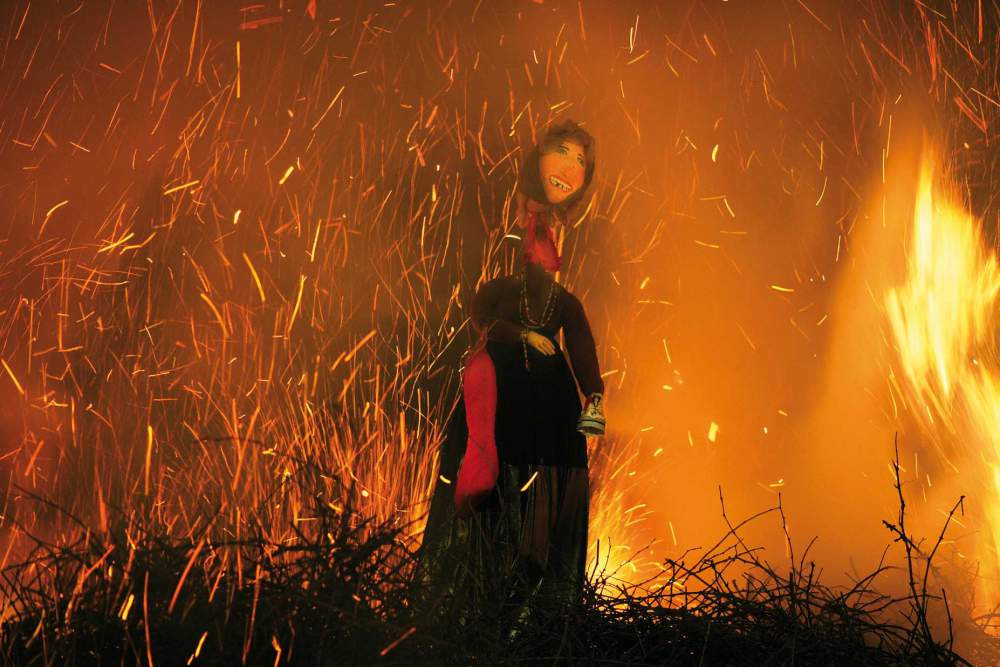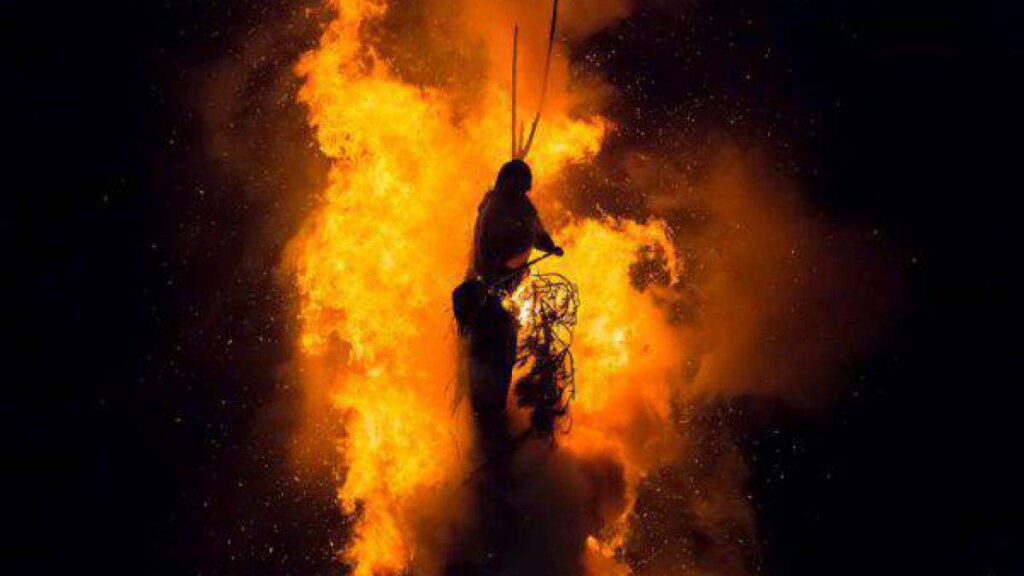In the Veneto countryside, the tradition of pyres of fire, also called foghère, or large propitiatory bonfires, is still alive. As they burn, in fact, predictions on the New Year are drawn based on the orientation of smoke and sparks.
New Year bonfires, which are generally set on fire in the night between 5 and 6 January, are a popular tradition in north-eastern Italy consisting of burning large piles of wood (in Veneto dialect ‘foghère’) and branches in the first days of January, usually on the eve of Epiphany. Due to its wide diffusion, there are many versions and names: in Friuli it is called “pignarû “l (or, in some areas of the Bassa Friulana, “cabossa”), in Bisiacaria “seima”, in the provinces of Treviso, Pordenone and Venice “panevìn o panaìn” (from pan e vin “bread and wine”, as a sign of good wishes for a year of abundance), but also “pìroła-pàroła”, “vècia” (“old”): pyres can take the shape of a puppet), ‘fogherada’ and ‘bubarata’, in the lower Friuli and eastern Veneto ‘foghèra o casèra’, in the Veronese and Polesine areas briolo, buriolo, brugnèlo, brujèo, bruja and the like. In the Bologna and Modena areas, it is customary to burn a puppet representing an old man (‘falò del vecchione’) on New Year’s Eve.
ORIGINS AND TRADITIONS
It seems that this custom derives from purifying and propitiatory rites widespread in pre-Christian times (Christianity took possession of this tradition, wanting the Epiphany fires to recall those lit by shepherds to dry the Baby Jesus’ clothes and to light the way for the Magi, who had lost their way in the region). The Celts, for instance, would light fires to ingratiate themselves with the relative deity and burn a puppet representing the past. While the bonfire burned, the peasants in a circle shouted and chanted various auspicious formulas. Remained intact as a ritual to be performed on the eve of Epiphany, even today the bonfire symbolises hope and the strength to burn the old man (it is no coincidence that the ‘old woman’ placed on top of the wood pyre can be burnt).


The bonfire is sometimes blessed by the parish priest and the crackling of holy water in the fire is identified with the enraged devil fleeing. The direction of the smoke and sparks (sometimes purposefully raised by peasants using a pitchfork) is read as an omen for the future. Note the following popular saying:
‘Pan e vin,
pinsa sotto il camin.
Faive a ponente
panoce gnente,
faive a levante
panoce tante’.
Another belief holds that the fall of the cross or the pole supporting the pyres can bring evil. In some areas it had to stand for at least eight days. The fire ritual is also a time when the community gathers to be together. It is accompanied by the tasting of mulled wine and pinza, a flatbread typical of this festival and sometimes baked on the pyres themselves. Currently, firework displays may be organised for the occasion.
he “Pan e Vin” has survived until today because it expresses the need to be together, to share anxieties and joys with others; gathering around the same fire at the hardest time of the year for life in the fields, reaffirmed, through the presence of all, the need for a brotherly bond between men and a renewed harmony with nature, despite hardships, privations and difficulties.
The ‘Pan e Vin’ is related to the mid-Lent bonfire, when a puppet in the form of an old witch is burnt, symbolising winter, evil and misery. The bonfire is preceded by a ‘trial’, during which the ‘old woman’ acts as a scapegoat for all the evils suffered by the community: taxes, mismanagement, natural disasters, etc. Just as the ‘Pan e Vin’ closed Christmas and started Carnival, the burning of the old woman leaves winter behind and works the magic that hastens the arrival of spring.




